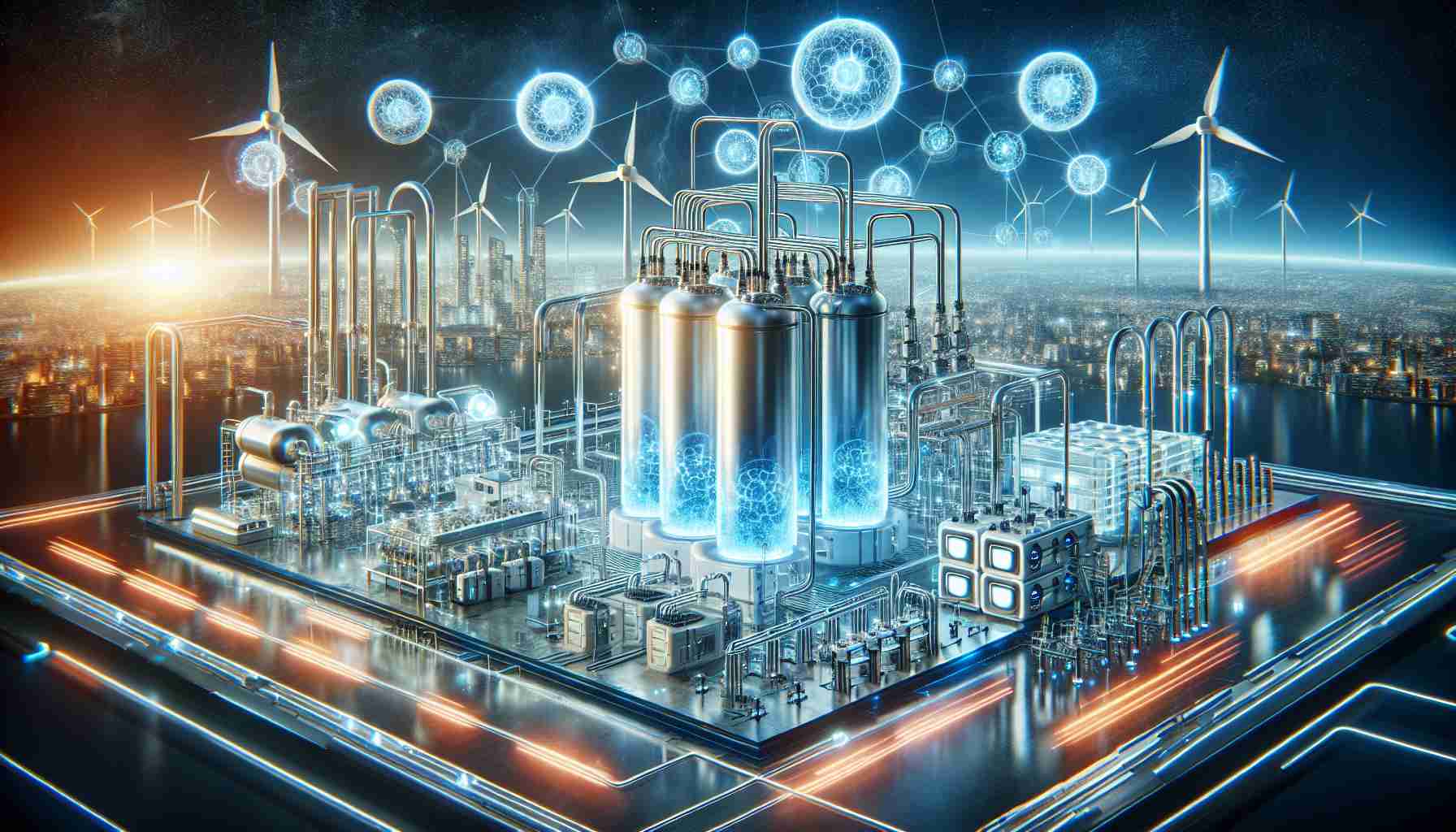
Hydrogen Energy Storage Market: A Transformative Shift
The global landscape of hydrogen energy storage is undergoing a seismic shift, with projections estimating its market value soaring from $13.76 billion in 2022 to over $572.56 billion by 2031. This remarkable growth is fueled by a 51.5% CAGR driven by the burgeoning industrialization in developing economies and the escalating embrace of green energy alternatives.
Hydrogen energy storage hinges on the production and retention of hydrogen sourced from renewables for various applications, including transportation, industrial processes, and grid management. The surge in demand for hydrogen from industries such as metal refining and fuel cells is significantly contributing to market dynamics. Supportive government initiatives aimed at establishing cost-efficient hydrogen stations are further catalyzing this growth.
However, challenges loom within the sector. Stringent regulations around hydrogen production, particularly via electrolysis, can hinder progress, and potential disruptions in the supply chain pose risks. The high costs associated with hydrogen production also present obstacles that must be addressed.
Regionally, North America is anticipated to hold a substantial market share, driven by increased consumption in chemical and refinery sectors, while Asia-Pacific is witnessing similar growth due to rising demand for sustainable energy sources.
As industry players forge partnerships and innovate technologies, the future of hydrogen energy storage promises to reshape the energy sector dramatically.
The Future of Hydrogen Energy Storage: Trends and Insights You Can’t Miss
Hydrogen Energy Storage Market Overview
The hydrogen energy storage market is on the brink of transformation, poised for exceptional growth from $13.76 billion in 2022 to more than $572.56 billion by 2031, with a compound annual growth rate (CAGR) of 51.5%. This paradigm shift is largely attributed to rapid industrialization in emerging economies and a significant pivot towards green energy solutions.
Key Features of Hydrogen Energy Storage
Hydrogen energy storage primarily revolves around producing and retaining hydrogen derived from renewable sources. This technology finds application in various fields such as:
– Transportation: Hydrogen fuel cells are becoming increasingly prominent in vehicles, providing a zero-emission energy source.
– Industrial Processes: Industries like metal refining are expanding their hydrogen usage to improve efficiency and reduce carbon footprints.
– Grid Management: Hydrogen storage systems help balance supply and demand, making them crucial for integrating renewable energy into power grids.
Use Cases and Innovations
The versatility of hydrogen storage extends into numerous sectors, including:
– Renewable Energy Integration: Hydrogen acts as a buffer for excess energy generated from sources like wind and solar, enabling better utilization of renewable resources.
– Portable Energy Solutions: Hydrogen-powered devices and vehicles represent a practical solution for portable energy needs in remote and underserved areas.
– Decarbonization Initiatives: Enterprises aiming for carbon neutrality are increasingly looking to hydrogen as a clean alternative for traditional fossil fuels.
Pros and Cons of Hydrogen Energy Storage
Pros:
– Environmental Benefits: Hydrogen can help reduce greenhouse gas emissions when produced sustainably.
– Scalability: The availability of hydrogen allows for large-scale energy storage capabilities.
– Versatile Applications: It can be utilized across various sectors, enhancing its market value.
Cons:
– Production Costs: The high costs associated with renewable hydrogen production pose a financial barrier for many businesses.
– Infrastructure Development: The lack of existing hydrogen infrastructure can slow down market penetration.
– Regulatory Hurdles: Stringent regulations around hydrogen production and storage may hinder growth.
Market Analysis and Trends
As of 2023, North America is set to maintain a significant share of the hydrogen storage market, propelled by increased demand in the chemical and refining industries. In contrast, the Asia-Pacific region is experiencing rapid growth due to heightened interest in sustainable energy, with countries like Japan and South Korea leading the charge in hydrogen technology.
Security and Sustainability Aspects
With the rise of hydrogen as a critical energy source, ensuring security in production and distribution is paramount. It involves:
– Safety Protocols: Stringent safety measures must be implemented to prevent accidents during hydrogen storage and transport.
– Sustainable Practices: Continuous efforts to produce hydrogen from renewable sources rather than fossil fuels align with global sustainability goals.
Future Predictions
As technological advancements continue to emerge, the hydrogen energy storage market is likely to transform markedly, with several predictions:
– Innovation Acceleration: Expect rapid advancements in hydrogen production technologies and efficiency improvements in electrolyzers.
– Infrastructure Development: Investment in hydrogen infrastructure will be crucial to support widescale adoption.
– Government Support: Increased governmental policies and subsidies will likely foster market growth, aiming for carbon-neutral goals by 2050.
Conclusion
The hydrogen energy storage market is more than just a trending topic—it represents a sinking seam of innovation and sustainability poised to redefine the energy landscape. With burgeoning applications and ongoing technological advancements, hydrogen is set to play a pivotal role in the transition to a greener future.
For further insights, visit Hydrogen Production.



